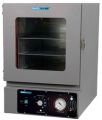Here’s some General information about Laboratory Drying Oven
A laboratory drying oven is a piece of equipment that is used in laboratories to dry or heat various chemicals, samples, or other materials that need to be preserved or stored for later use. Some are designed as a mere cabinet with an enclosed chamber to contain the heat while others are stand-alone pieces of machinery with multiple chambers and hoses such as a micrometer which measures the temperature in degrees Celsius (°C). Laboratory drying ovens can also vary according to their power source; some operate on electrical current while others run on propane, oil, natural gas, electricity, coal, and wood.
How to use Laboratory Drying Oven?
Laboratory drying ovens come in different sizes and shapes depending on the intended use and they must be used properly with proper maintenance of the equipment. To perform manufacturing or laboratory processes, it is important to ensure that your samples are properly dried. This process is easily performed by using a drying oven since it is designed with various chambers and hoses to collect retain or store whatever needs to be dried.
It also contains a thermostat for safety purposes, so that the temperature of the oven can always remain constant during operation hours which helps avoid overheating. Laboratory drying ovens are designed to go into operation automatically once a certain temperature is reached and are operated by a source of electrical energy.
It usually has a thermostat or built-in timer that can be adjusted during the cooling down period after the product has been heated up to maintain a constant temperature. It also reduces the risk of eventual contamination, since it allows for complete drying of samples within an extremely short period.
Benefits of using a Laboratory drying oven:
The laboratory drying ovens are designed with various chambers and hoses to collect, hold or store whatever needs to be dried. It also contains a thermostat for safety purposes, so that the temperature of the oven can always remain constant during operation hours which helps ensure that it has been properly used by protecting your product from overheating.
It is also an energy-efficient piece of equipment since it is capable of maintaining a constant temperature and reducing the risk of overheating your product while at the same time preventing contamination by minimizing evaporation or moisture loss from your sample.
Use cases of laboratory drying oven:
Annealing:
Annealing is a process of heating the product at a temperature below the normal melting point of its component material, which results in making it brittle and soft. However, when it is annealed at a low temperature, it produces an intermediate hardness that allows for better physical properties, such as strength and the ability to absorb energy from stress.
It can be defined as controlled heating below the melting point. This transformation happens through mechanical deformation during heating which results in micro cracks through which heat moves into the material. This can result in micro-reliefs or grain boundaries along those defects with subsequent thermal dislocations that cause delamination and allow for plastic flow.
Drying:
Laboratory drying ovens allow for the drying of samples, medicines such as capsules and tablets, and even jewelry. It is also important to mention that they can be used in other processes besides just drying. Drying ovens are used for curing machine parts and other materials, mainly because of the low energy costs. For example, they are also used in preparing various heat treatment procedures such as curing films.
Sterilizing:
Sterilizing is the process of preserving your product from microbial contamination by using gas, liquid, or heat. Sterilizing liquids can be used for cleaning, sterilizing, and even heat treatment. To sterilize equipment and various materials, the laboratory drying oven must be designed with proper chambers and hoses for storing or holding orders made of glass, plastic, or metal.
It is also important to use the correct temperature since it can be too high or too low and you may end up damaging your samples which will be useless in your experiments.
Incubator VS Laboratory Drying Oven:
The major difference between an incubator and a laboratory drying oven is that the former is designed for preparing cells or tissue samples such as embryos, eggs, or tissue at room temperature, whereas the latter only heats specific samples to preserve them from microbial contamination.
To set up a lab drying oven, you must be equipped with the correct equipment including an electricity source and an exhaust system which should be properly installed. You also need to make sure that the equipment you are about to use has been properly maintained in the past for your safety. If you do not have one yet, you should get to research laboratory drying ovens before making any purchase as there are various types available at Global Lab Supply.
Conclusion:
Laboratory drying ovens are designed with various chambers and hoses to collect, hold or store whatever needs to be dried. It also contains a thermostat for safety purposes, so that the temperature of the oven can always remain constant during operation hours which helps guarantee that it has been properly used by protecting your product from overheating.
Original Source: https://www.fuzia.com/article_detail/684185/heres-some-general-information-about-laboratory-drying-ov
Other articles and publications:
- +1 (714) 754-6660
- 2106 N Glassell St, Orange, CA, 92865, USA
- www.globallabsupply.com/Chairs-Stools-s/1825.htm




